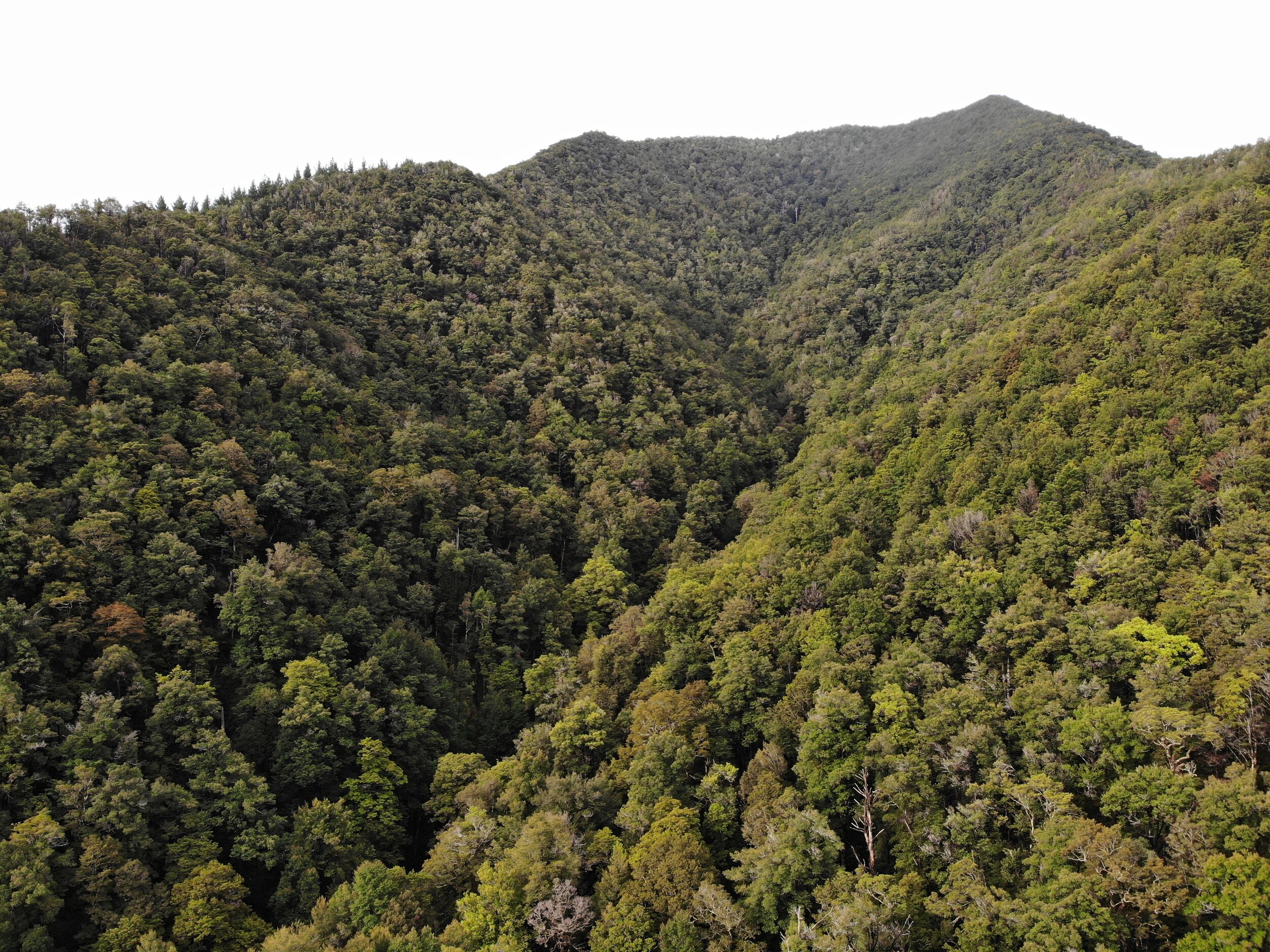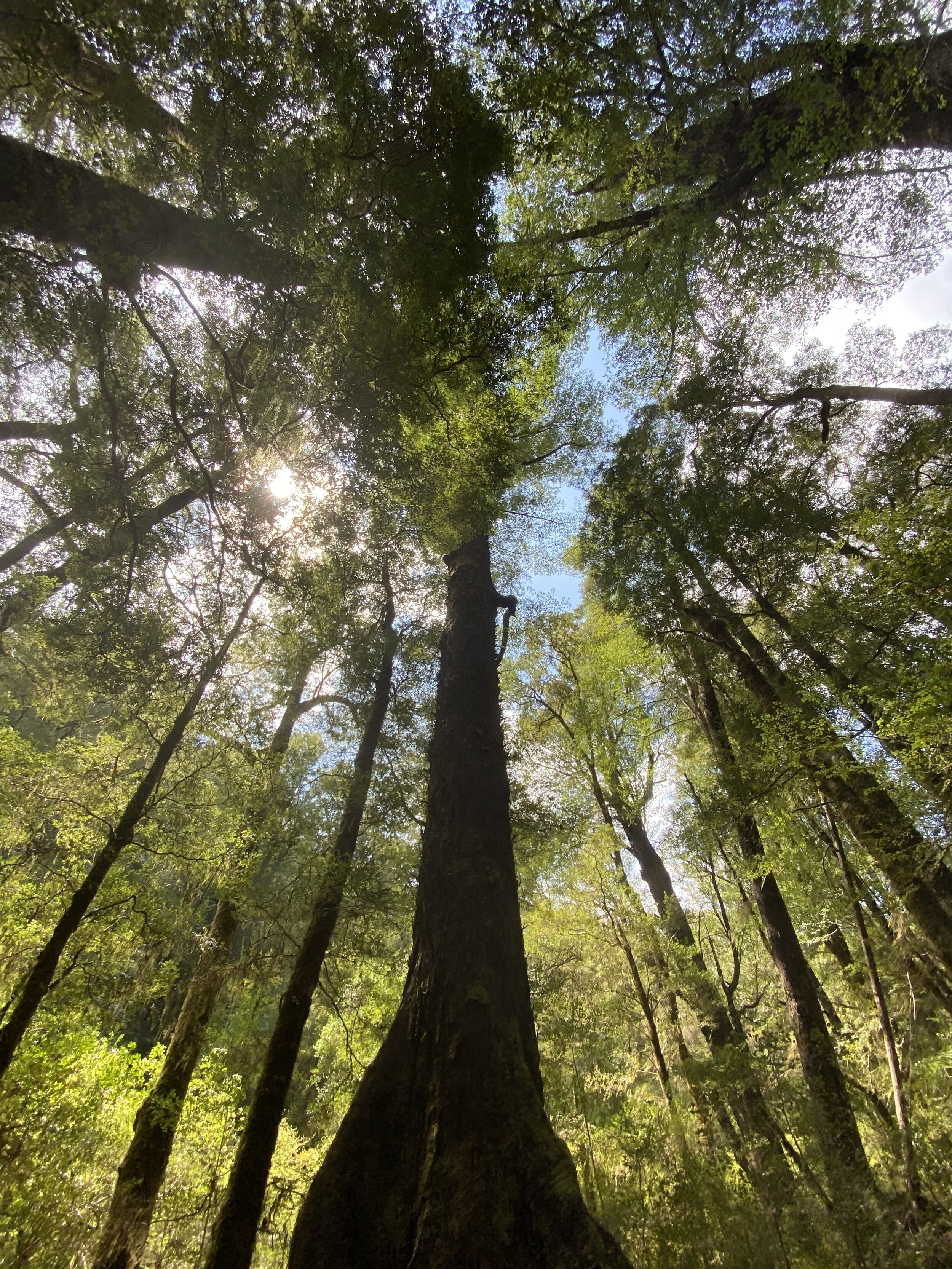The Forest
Nestled between Nelson Lakes and the West Coast, the Kern Creek Forest conservation project protects over 130 ha of mixed forest, with the goal for this to be a native forest and biodiversity haven. The forest climbs steep hillside to the upper reaches of two tributaries of the Maruia River. One of these is Kern Creek, giving the project its name.
One of the streams on the site
The whole 130 ha is protected by a QEII covenant. Around 100 ha of this is old growth beech forest teeming with biodiversity. A further 21 ha of the land is covered in diseased pine trees. Fortunately, the pines have not formed a canopy and are allowing a nursery of native regeneration underneath. Over time and with the support of pest control, nature will be allowed to take its course in reviving the indigenous forest. There is a further 9 ha of regenerating native from open land, with multiple different tree species.
The land is protected under a QEII covenant, and the pine and regenerating native areas are registered as a carbon forest under the ETS. This means no logging will take place and the landowner is responsibly for preserving and enhancing the forest. The proceeds from carbon credit sales will be used to preserve and enhance the whole forest project, including for weed and pest control, as well as supporting other forest restoration projects in the region.
The People
Gerard Malcolm purchased the land with the dream of preserving and enhancing this special place. A former businessman, he is passionate about forest restoration and has several projects like this in Te Tau Ihu o te Waka a Maui.
The Location
Technical Stuff
The Kern Creek Forest Conservation Project is being undertaken under the New Zealand Emissions Trading Scheme. The project issues New Zealand Units (NZUs) based on New Zealand Government rules for carbon sequestration rates by indigenous forest.
Once the NZUs are sold to a carbon offset buyer, they are cancelled in the New Zealand carbon unit registry, so they cannot be used by (or sold to) anyone else.
Follow The Money
Conservation costs money. The main cost elements are:
Establishing a forest. This forest was established by nature because it naturally regenerated after the landowner stopped grazing this land.
Conservation management costs. This includes pest and weed control, forest monitoring, and the administration of the carbon project (carbon returns, registry account management and general administration).
Opportunity costs. This is the revenue that the landowner has given up to enable forest conservation to happen. In this project the landowner gave up revenue from pastoral farming - revenue that would normally be used to make a living off the land.
Measurement, reporting and verification costs required for carbon offset certification to an international carbon standard.
When carbon credits are sold from this project the revenue goes to cover these costs.





